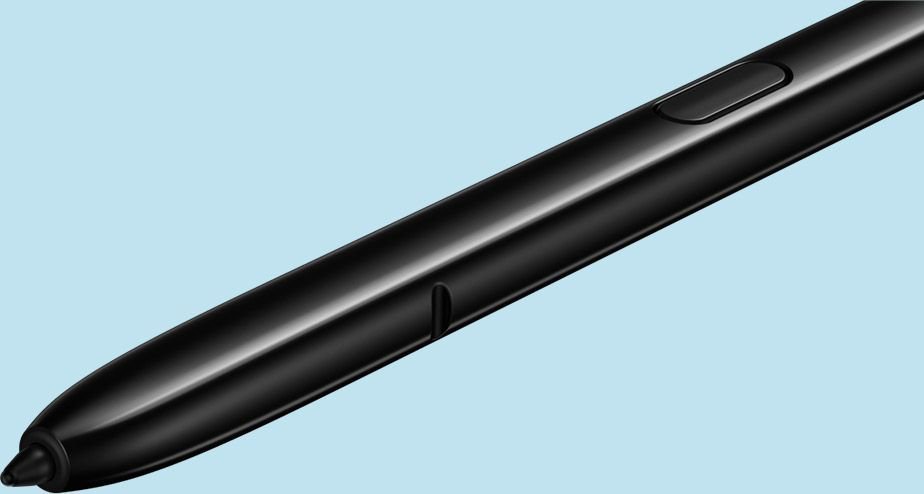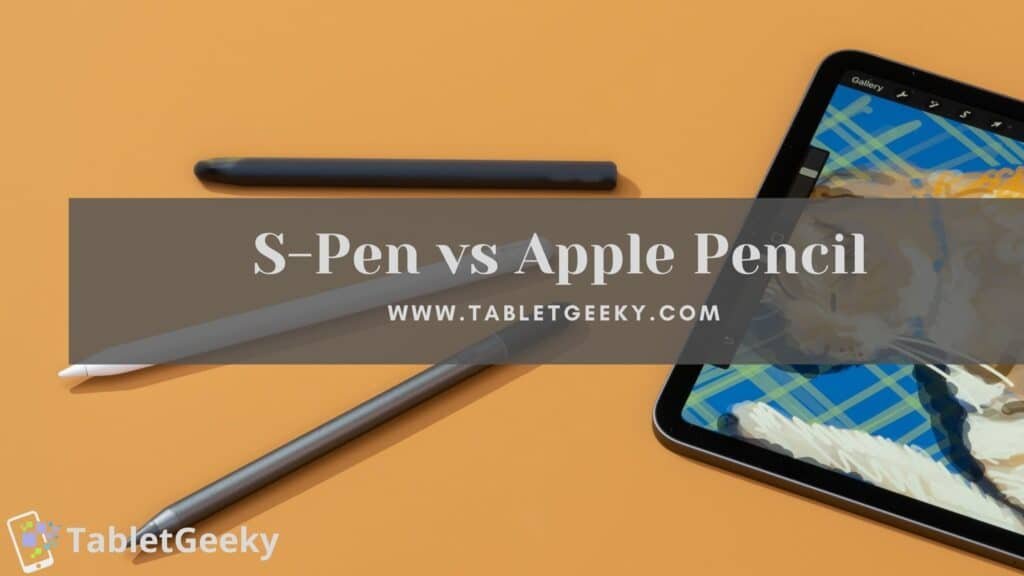Apple Pencil and Samsung S Pen are two of the most advanced digital stylus in the industry. Apple Pencil provides high-precision drawing performance on iPadOS, while Samsung S Pen offers integrated control features on Galaxy tablets. Apple Pencil vs Samsung S Pen comparison increases clarity for artists, students, designers, and professionals who want exact tool behavior, accurate handwriting support, and optimized screen interaction.

This guide explains Apple Pencil and Samsung S Pen strengths, differences, performance attributes, compatibility insights, and real-world use cases with certainty and precision.
Table of Contents
Apple Pencil vs Samsung S Pen: Overview
Apple Pencil uses low-latency pencil algorithms optimized for iPad displays. Apple Pencil delivers consistent pressure curves, precise tilt response, and pencil-grade stability for illustration and note-taking.
Samsung S Pen uses Wacom EMR technology. Samsung S Pen provides battery-free input, fast hover detection, gesture shortcuts, and integrated system controls across Samsung Galaxy tablets.
Apple Pencil and Samsung S Pen differs in hardware architecture, latency systems, pressure recognition depth, software ecosystems, and workflow integration.
Apple Pencil vs Samsung S Pen: Comparison
Design and Build Quality
Apple Pencil

Apple Pencil uses a uniform cylindrical build. It feels identical to a real pencil due to weight balance and friction-reduced surface finish. Apple Pencil attaches magnetically, charges on the iPad frame, and maintains consistent grip orientation.
Samsung S Pen

Samsung S Pen uses a lighter build. It offers a pen-style grip with a physical button for shortcuts. Samsung S Pen fits into tablet housings on many Galaxy Tab models. Its EMR system eliminates internal batteries, increasing durability.
Apple Pencil and Samsung S Pen design difference increases preference variation: Apple Pencil prioritizes neutrality; Samsung S Pen prioritizes utility.
Latency Performance
Apple Pencil
Apple Pencil latency reaches extremely low response rates with ProMotion 120Hz displays. Apple Pencil maintains fast stroke rendering, instant mark feedback, and precise curve tracking. The latency range stays nearly imperceptible during sketching.
Samsung S Pen
Samsung S Pen latency remains competitive due to EMR technology. It registers strokes before the nib touches the display via hover detection. The response produces smooth lines during handwriting and drawing.
Apple Pencil and Samsung S Pen latency difference remains minimal in everyday use, although Apple Pencil maintains slightly tighter stroke stabilization.
Pressure Sensitivity and Tilt Control
Apple Pencil
Apple Pencil uses a highly calibrated pressure engine. It increases line weight precisely and maintains consistent transitions in shading. Tilt detection behaves identically to real pencil shading on paper.
Samsung S Pen
Samsung S Pen pressure response remains strong due to EMR. It delivers smooth pressure curves and reliable tilt angles. It works efficiently for calligraphy, diagram creation, and sketching.
Apple Pencil and Samsung S Pen pressure control difference remains small, with Apple Pencil maintaining more artistic micro-control and Samsung S Pen providing smooth general-purpose accuracy.
Compatibility and Ecosystem
Apple Pencil
Apple Pencil works exclusively with iPads. It integrates deeply into iPadOS apps such as Procreate, Notability, GoodNotes, Adobe Fresco, Concepts, and Affinity Designer. The ecosystem offers uniform behavior across all compatible models.
Samsung S Pen
Samsung S Pen works across Galaxy Tab tablets and Galaxy phones. It integrates into Samsung Notes, Clip Studio Paint, PenUp, Concepts, and multiple Android design applications. It also supports remote control features in several camera and presentation apps.
Apple Pencil and Samsung S Pen compatibility difference impacts purchasing decisions strongly: Apple ties stylus to iPadOS exclusivity; Samsung uses a wide Android ecosystem.
Software Experience
Apple Pencil
Apple Pencil integrates with iPadOS Scribble, Quick Notes, Freeform, and native markup features. Artists gain responsive brush dynamics, stabilized stroke rendering, and highly refined palm rejection.
Samsung S Pen
Samsung S Pen integrates with Samsung Notes, Air Commands, screen-off memos, handwriting-to-text conversion, and remote Bluetooth actions on supported models. The software focuses on productivity, note-taking, and multi-tasking.
Apple Pencil and Samsung S Pen software experience difference reflects platform focus: Apple centers performance for creatives, while Samsung centers utility for productivity.
Battery and Charging
Apple Pencil
Apple Pencil requires charging. The magnetic charging system maintains full power with minimal effort. Battery life supports extended drawing sessions. You can charge Apple pencil using Iphone also.
Samsung S Pen
Samsung S Pen does not require charging for general writing or drawing because EMR supplies power through the display. Bluetooth gestures require occasional charging on compatible models.
Apple Pencil and Samsung S Pen battery difference highlights Samsung’s reliability for long-term note-taking and Apple’s reliability for fast charging convenience.
Palm Rejection Performance
Apple Pencil
Apple Pencil palm rejection operates at high accuracy. It ignores wrist contact, supports angled drawing, and maintains clean line behavior.
Samsung S Pen
Samsung S Pen palm rejection remains reliable. It prevents accidental marks during handwriting and drawing sessions.
Apple Pencil and Samsung S Pen palm rejection difference stays minimal in practical use.
Note-Taking Experience
Apple Pencil
Apple Pencil offers handwriting accuracy with minimal stroke distortion. Note-taking apps use pencil pressure behavior to mimic pen and paper.
Samsung S Pen
Samsung S Pen excels at productivity note-taking. Screen-off memo and fast handwriting conversion improve speed during meetings and classes.
Apple Pencil and Samsung S Pen for note-taking becomes preference-based: Apple prioritizes precision; Samsung prioritizes utility.
Drawing and Illustration Performance
Apple Pencil
Apple Pencil leads in drawing accuracy and brush realism. Artists achieve smooth curves, controlled shading, and stable stroke consistency.
Samsung S Pen
Samsung S Pen remains strong for sketching, but heavy illustrators typically note Apple Pencil’s tighter stroke precision.
Apple Pencil and Samsung S Pen drawing performance difference makes Apple Pencil the preferred tool for high-detail artwork.
Extra Features
Apple Pencil
- Magnetic charging
- Pixel-accurate drawing
- Double-tap tool switch (specific models)
- Scribble handwriting functions
Samsung S Pen
- Battery-free EMR technology
- Hover pointer
- Air Actions
- Physical shortcut button
Apple Pencil and Samsung S Pen feature sets show divergent priorities: Apple optimizes drawing flow; Samsung optimizes device control.
Apple Pencil vs Samsung S Pen: Real-World Use Cases
Apple Pencil Works Best For
- Illustration
- Graphic art
- Tattoo design
- Animation concepting
- Digital painting
- Precision sketching
Samsung S Pen Works Best For
- Notes
- File annotation
- Productivity tasks
- Light sketching
- Multi-task pinning
- Classroom tasks
Apple Pencil vs Samsung S Pen use case division helps buyers choose based on daily workflow.
Pricing Considerations
Apple Pencil typically costs more than Samsung S Pen. Samsung S Pen frequently comes included with tablets, increasing value for students and business users. Apple Pencil’s separate cost reflects its advanced internal hardware.
Apple Pencil vs Samsung S Pen: Detailed Comparison Table
| Feature | Apple Pencil | Samsung S Pen | Winner |
|---|---|---|---|
| Latency | Extremely low with 120Hz ProMotion; tight stroke stabilization | Very low via EMR hover system | Apple Pencil for tighter control |
| Pressure Sensitivity | Highly calibrated, accurate pressure curves | Smooth EMR pressure response | Apple Pencil for artistic micro-control |
| Tilt Recognition | Pencil-grade tilt shading accuracy | Reliable tilt, slightly softer transitions | Apple Pencil |
| Battery | Requires charging (magnetic charging) | Battery-free for writing/drawing; Bluetooth features require charge | Samsung S Pen |
| Palm Rejection | Highly accurate with iPadOS | Reliable with One UI | Tie |
| Drawing Accuracy | Industry-leading precision; best for illustration | Strong for sketching, mid-level for advanced art | Apple Pencil |
| Note-Taking | Smooth handwriting, precise strokes | Exceptional productivity features like Screen-Off Memo | Samsung S Pen |
| Feature Set | Double-tap switch, Scribble, magnetic pairing | Air Actions, hover pointer, system controls | Samsung S Pen |
| Software Ecosystem | Strong creative ecosystem (Procreate, Fresco, Affinity) | Strong note + productivity ecosystem (Samsung Notes, Clip Studio) | Depends on workflow |
| Compatibility | iPad-only | Works across Samsung tablets/phones | Samsung S Pen |
| Ergonomics | Heavier, pencil-like feel | Lighter, pen-like feel with button | Depends on grip preference |
| Price | Higher cost | Often included with device | Samsung S Pen |
| Target User | Artists, illustrators, designers | Students, professionals, everyday users | Depends on use case |
Conclusion
Apple Pencil vs Samsung S Pen comparison reflects two different design philosophies. Apple Pencil focuses on creative control, precise pressure curves, and artistic performance. Samsung S Pen focuses on productivity, handwriting efficiency, and system-level tools. Choosing between Apple Pencil and Samsung S Pen depends entirely on whether the buyer prioritizes advanced drawing features or advanced productivity functions.
Howdy Geeks, I'm Andrew, a young passionate blogger, Tech Freak & a Gadget Lover. I help people in buying them the best tablet devices

